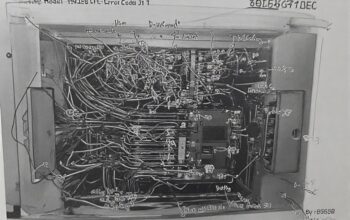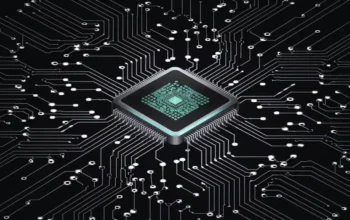
Introduction
In today’s digital era, 3D animation has become a cornerstone of visual storytelling, shaping how we experience entertainment, education, and communication. From the lifelike characters in blockbuster films to immersive video game worlds, 3D animation captivates audiences with its depth and realism. But what exactly is 3D animation, and how does it work? This comprehensive guide explores the definition, history, techniques, applications, career opportunities, and future trends of 3D animation. Whether you’re a beginner curious about the craft or a professional seeking deeper insights, this article will illuminate the fascinating world of 3D animation.
At its core, 3D animation involves creating moving images in a three-dimensional digital space. Unlike 2D animation, which operates on a flat plane, 3D animation adds depth, allowing objects to be viewed from multiple angles and to interact realistically with light and shadow. This technology has evolved dramatically, transforming industries like film, gaming, advertising, and even medicine. By leveraging advanced software and techniques, 3D animation brings imagination to life, making it a powerful tool for storytelling and visualization.
History of 3D Animation
The journey of 3D animation began in the early 1900s with stop-motion techniques using clay models, as seen in films like The Sculptor’s Welsh Rarebit Dream (1908). These early experiments laid the foundation for modern animation. However, digital 3D animation emerged in the 1960s, driven by pioneers like William Fetter, who created the first 3D human form, and John Whitney, who explored computer-generated imagery (CGI). Their work marked the beginning of a new era in visual effects.
The late 1980s saw photorealistic 3D animation enter mainstream cinema. In 1993, Jurassic Park amazed audiences with its realistic dinosaurs, showcasing the potential of 3D animation to create lifelike creatures. Two years later, Pixar’s Toy Story (1995) became the first fully computer-generated feature film, revolutionizing the industry. This milestone proved 3D animation’s commercial and artistic viability, paving the way for its widespread adoption.
Today, 3D animation extends far beyond entertainment. It’s used in marketing for product demos, in education for visualizing complex concepts, and in medicine for anatomical simulations. The evolution of 3D animation reflects its growing versatility, making it an essential tool across diverse fields. As technology advances, its impact continues to expand, creating new possibilities for creators and industries alike.
Techniques in 3D Animation
Creating 3D animations is a complex process involving multiple stages and techniques. Each step requires specialized skills and software to produce high-quality results. Below are the key techniques in the 3D animation pipeline:
Modeling
Modeling is the first step, where artists create 3D objects or characters using software like Autodesk Maya (Autodesk Maya), Blender (Blender), or 3ds Max. Techniques include polygon modeling, NURBS, and subdivision surfaces, which allow artists to craft detailed shapes, from characters to environments. This stage sets the foundation for the entire animation process.
Rigging
Once models are created, riggers build a digital skeleton or “rig” inside them. This skeleton, often using inverse kinematics (IK), enables natural movement by defining joints and controls. For example, rigging a character’s arm allows it to bend realistically at the elbow. Software like Maya and 3ds Max are commonly used for rigging, ensuring models are ready for animation.
Animation
Animators bring models to life by defining their movements. Keyframe animation, a core technique, involves setting specific poses at key points in time, with software interpolating the motion between them. Motion capture, another method, records real-world movements and applies them to digital characters, as seen in films like Pirates of the Caribbean (Motion Capture Example). Software like Maya and Blender support these techniques.
Texturing and Shading
Texturing adds surface details, such as colors and patterns, to models, while shading defines how light interacts with these surfaces. This step creates realistic or stylized visuals, depending on the project’s needs. Tools like Substance Painter and Blender are popular for texturing, ensuring models look lifelike or artistically unique.
Lighting
Lighting artists set up virtual lights to enhance mood, depth, and realism. Proper lighting is critical for making scenes visually appealing, whether for a dramatic film or a vibrant game. Software like Maya and Blender allows precise control over lighting effects, creating the desired atmosphere.
Rendering
Rendering generates the final images from the 3D scene, a process that can be computationally intensive for photorealistic animations. Software like Arnold, V-Ray, and Blender’s Cycles are used to produce high-quality visuals. Rendering is essential for transforming digital models into polished, viewable content.
Compositing
Compositing combines rendered elements, such as characters, backgrounds, and effects, into the final product. Software like Nuke or Adobe After Effects is used to add visual effects, adjust colors, and finalize the animation. This step ensures a seamless and polished result.
Advanced techniques include fluid simulation for realistic water, smoke, or fire effects, often using Houdini or Blender, and procedural animation for complex, rule-based movements like swarms. These techniques, combined with the core pipeline, enable animators to create stunning, lifelike visuals that captivate audiences.
| Technique | Description | Software Used | Common Applications |
| Modeling | Creates 3D objects or characters using polygon modeling, NURBS, or subdivision surfaces. | Maya, Blender, 3ds Max | Building characters, environments, objects. |
| Rigging | Sets up digital skeletons for natural movement using inverse kinematics. | Maya, 3ds Max | Animating character limbs, e.g., arms, legs. |
| Keyframe Animation | Sets poses at key points, with software interpolating motion. | Maya, Blender, 3ds Max | Animating complex movements in films, games. |
| Motion Capture | Records real-world movements and applies them to digital characters. | Various | Films like Pirates of the Caribbean. |
| Fluid Simulation | Generates realistic fluids like water, smoke, or fire. | Houdini, Blender, Maya | Creating effects like clouds, explosions. |
Applications of 3D Animation
3D animation’s versatility makes it a powerful tool across multiple industries. Below are its key applications:
Entertainment
In films like Avatar and The Lion King (The Lion King Remake), 3D animation creates immersive worlds and lifelike characters. In video games like The Last of Us, it powers dynamic environments and interactive storytelling, enhancing player experiences.
Advertising and Marketing
Companies use 3D animation to create engaging commercials, product demos, and explainer videos. Its ability to visualize complex ideas in an appealing way makes it ideal for marketing campaigns, helping brands stand out (3D Animation Uses).
Education and Training
3D animation simplifies complex concepts, making it valuable for educational videos and training simulations. For example, medical animations demonstrate surgical procedures, while training programs use interactive 3D models to teach skills (Interactive 3D).
Architecture and Real Estate
Architects and developers use 3D animation to create virtual tours of buildings, allowing clients to visualize projects before construction. This helps in design validation and client presentations, saving time and resources.
Science and Medicine
In medicine, 3D animation models molecular structures, simulates biological processes, and creates anatomical visualizations. It’s used for training, patient education, and even reducing anxiety during procedures like MRI scans (Medical Animation).
Automotive and Product Design
Designers use 3D animation to prototype and test products virtually, reducing the need for physical models. This streamlines the design process and cuts costs, making it a staple in industries like automotive manufacturing.
Careers in 3D Animation
The 3D animation industry offers diverse career paths, each requiring specialized skills. Below are key roles:
- 3D Modeler: Creates digital objects and characters using software like Maya or Blender.
- Rigger: Builds digital skeletons for models, enabling realistic movement.
- Animator: Brings models to life through keyframing or motion capture.
- Texture Artist: Applies textures and materials to models for visual realism.
- Lighting Artist: Sets up virtual lights to enhance scene mood and depth.
- Renderer: Manages the rendering process to produce final images.
- Compositor: Combines rendered elements and adds effects in post-production.
- Storyboard Artist: Creates visual outlines for the animation’s narrative.
- Director: Oversees the entire animation production process.
To enter the field, a degree or diploma in animation, computer graphics, or a related field is often required, along with proficiency in software like Maya, Blender, or Cinema 4D (3D Animation Software). Online courses and tutorials, such as those from Animation Mentor (Animation Mentor), can also help aspiring animators build skills.
Future of 3D Animation
The future of 3D animation is bright, driven by technological advancements. Key trends include:
- Real-time Rendering: Tools like Unreal Engine and Unity enable high-quality animations in real-time, revolutionizing gaming and interactive experiences (Unity Animation).
- Virtual Reality (VR) and Augmented Reality (AR): 3D animation powers immersive VR and AR applications, from gaming to training simulations.
- Artificial Intelligence (AI): AI automates tasks like lip-syncing and crowd simulation, streamlining production (AI in Animation).
- Increased Realism: Advances in rendering and hardware create visuals nearly indistinguishable from live-action footage.
- Sustainability: 3D animation supports virtual prototyping, reducing waste in industries like manufacturing.
These trends suggest a dynamic future, with 3D animation continuing to push creative and technical boundaries.
FAQs
What is the difference between 2D and 3D animation?
2D animation operates on a flat, two-dimensional plane, while 3D animation adds depth, allowing realistic perspectives and lighting (2D vs 3D).
What software is used for 3D animation?
Popular tools include Autodesk Maya, Blender, Cinema 4D, Houdini, and 3ds Max, each suited for different tasks in the animation pipeline.
How long does it take to learn 3D animation?
Learning 3D animation can take months to years, depending on dedication and complexity. Beginners can start with online tutorials, while professionals may pursue formal education (Animation for Beginners).
Is 3D animation only for movies and games?
No, it’s used in advertising, education, architecture, medicine, and more, making it a versatile tool across industries.
What are the career prospects in 3D animation?
The industry offers strong prospects, with roles like modeler, animator, and rigger in demand across film, gaming, and other sectors ([3D Animator Guide](https://www.anideos.com/all-you-need-to-know-about-being-a-3d- Hawkins)).
Conclusion
3D animation is a dynamic field that blends creativity and technology to create captivating visuals. From its humble beginnings in stop-motion to its current role in films, games, and beyond, 3D animation continues to evolve, offering endless possibilities for storytelling and innovation. Whether you’re drawn to creating animated films, designing interactive experiences, or visualizing scientific concepts, the 3D animation industry is full of opportunities.



